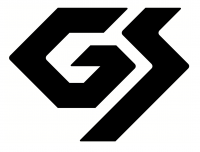Roland GS: Difference between revisions
Jump to navigation
Jump to search
(Add list of GS features and restate relationship to SC series) |
(Mention MSGS) |
||
| Line 11: | Line 11: | ||
* Adjustable Reverb and Chorus effects<ref name=sc-55-p62></ref><ref name=sc-55mkii-p81>Roland SC-55mkII Owner's Manual, page 81.</ref> | * Adjustable Reverb and Chorus effects<ref name=sc-55-p62></ref><ref name=sc-55mkii-p81>Roland SC-55mkII Owner's Manual, page 81.</ref> | ||
* Tone editing<ref name=sc-55mkii-p81></ref> | * Tone editing<ref name=sc-55mkii-p81></ref> | ||
Since it lacks these features, [[Microsoft GS Wavetable Synth]] is (despite the name) probably not compliant with GS. | |||
== References == | == References == | ||
Revision as of 13:57, 30 August 2024

Roland GS is an expansion of the General MIDI standard, made by Roland.
It was introduced with and primarily used by the Roland Sound Canvas series, starting with the Roland SC-55. Some Yamaha XG devices provide unofficial support for it via the TG300B mode.
According to Roland, the main features of the GS standard (excluding ones common to GM) include:
- Multiple drumset types,[1] accessed with a Program Change message[2]
- Support for additional MIDI messages like Mono mode and Portamento[2]
- Variation instrument specification with bank selects[1][2]
- Adjustable Reverb and Chorus effects[2][3]
- Tone editing[3]
Since it lacks these features, Microsoft GS Wavetable Synth is (despite the name) probably not compliant with GS.
References
See also
- Category:Roland GS devices (list of pages about GS devices)
- GM–GS–XG quick reference (list of Control Changes used by GS)